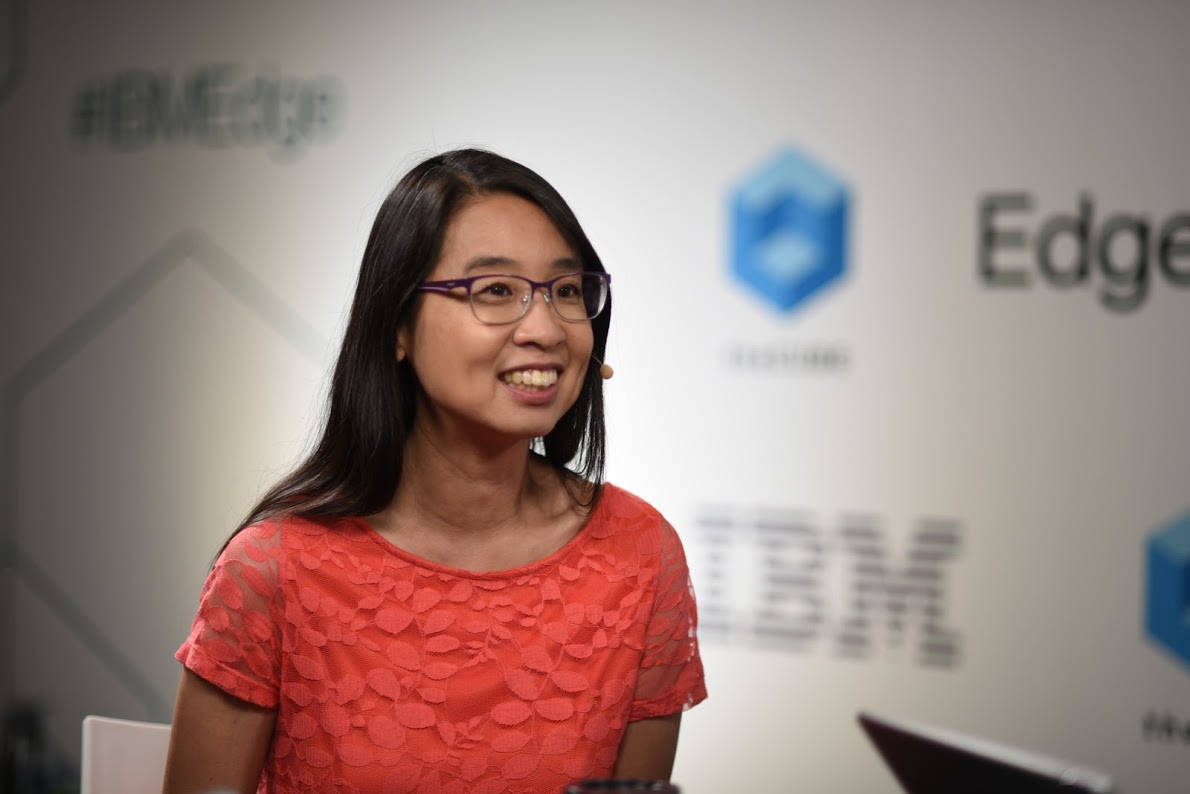 NEWS
NEWS
 NEWS
NEWS
 NEWS
NEWS
During her part of the keynote address at IBM Edge 2016, Donna Dillenberger, IBM fellow, Watson Research Center, at IBM, demonstrated how analytics and transactions work together using The Linux Foundation’s version of blockchain, called Hyperledger.
Fresh off the keynote stage, Dillenberger joined Dave Vellante (@dvellante) and Stu Miniman (@stu), cohosts of theCUBE, from the SiliconANGLE Media team, to provide insight into the evolution of blockchain and how open source is bringing blockchain to the enterprise.
This week, theCUBE features Donna Dillenberger in our Women in Tech column.
Vellante opened the interview discussing Dillenberger’s part of the keynote address. He asked about the importance of open-source projects to IBM. She responded by noting the sum is greater than the separate parts.
“Of those 10 projects, some of them are Node.js, Open Container, Eclipse, OpenPOWER, Open Mainframe and Spark; everyone has their own expertise. Every company develops a set of core competencies. For example, IBM, we’re really good at scalability and security, but when we partner that [knowledge] with people who donate their expertise in analytics, their expertise in Docker containers, that’s like the best date,” she said.
Dillenberger continued: “You complement each other; you push each other on. There’s nothing that sharpens minds like other minds; and to have other people with such great skills, it not only brings IBM people to a better level of expertise … we’re better together than separate.”
Vellante then led a discussion about blockchain. He was impressed that IBM saw the technology implications early on and inquired about what led the company to The Linux Foundation’s Hyperledger Project. Dillenberger’s response described a protocol that had merit but needed improvement.
“Bitcoin started in 2009 as a result of the Great Recession. There were a bunch of people [who] wanted to build this cryptocurrency that would be free of central governments and banks. To do that they thought, We can’t even rely on computer systems. We have to ensure that Bitcoin would be hosted and distributed in computer systems that no one owned,” she explained.
“That led to the creation of a protocol that could run on distributed computers, and even if one computer fails, the Bitcoin network would last. If a set of computers were compromised, the data would also still have integrity, and that led to the creation of the blockchain protocol,” Dillenberger explained.
Dillenberger continued to explain the blockchain process: “Bitcoin uses the blockchain protocol to use distributed systems to record financial transactions. But now that you have a distributed protocol that can record financial transactions, you can also use that distributed protocol to record the provenance of your food.”
As a use case, Dillenberger offered an example of how to use the Internet of Things (IOT) to track food quality and explained how the data is put on the blockchain and how it would be hard to tamper with the data.
“Now there’s that level of transparency and that ability to provide that data in it’s true distributed way, so even one owner can’t compromise it. That actually leads to more trust,” she stated.
Vellante addressed the issue of hacking into a blockchain network. He noted that it is virtually “unhackable.” Dillenberger said this is not so in all cases.
“That’s the goal — to make it unhackable. Bitcoin was the first one, and the Bitcoin development of their use of blockchain has some weaknesses. And that’s why IBM, with other companies, came up with a different implementation of the blockchain. The Linux Foundation Hyperledger blockchain … it is extremely different form Bitcoin-derived blockchains. Bitcoin-derived blockchains uses things like proof-of-work.”
Dillenberger explained that it requires solving complex math problems. All other computers in the system have to follow the first computer to solve it, which leaves the system open to hacking.
“Hyperledger does not have that requirement for solving complex math problems and proof of work. We have a set of validators … and the Hyperledger blockchain provides that flexibility so that only the participants who are part of the transaction, they are the ones who know whether that data is valid or not,” she said.
Vellante inquired about the business impact to IBM, and Dillenberger reported that reducing the number of disputed transactions is good for business and relationships.
“The goal, the reason why we put this on blockchain, is to reduce the amount of time it takes to resolve a dispute, which is 44 days. When we take the amount of time it takes to resolve a dispute, we don’t require that much money we have to put on hold in our supply chain. And it also creates better relationships with our partners and suppliers as well. And that has been the goal of the IBM global finance blockchain,” she said.
During the interview, Dillenberger also provided interesting insight into IoT, analytics and security.
Watch the complete video interview below, and be sure to check out more of SiliconANGLE and theCUBE’s coverage of IBM Edge 2016.
Support our mission to keep content open and free by engaging with theCUBE community. Join theCUBE’s Alumni Trust Network, where technology leaders connect, share intelligence and create opportunities.
Founded by tech visionaries John Furrier and Dave Vellante, SiliconANGLE Media has built a dynamic ecosystem of industry-leading digital media brands that reach 15+ million elite tech professionals. Our new proprietary theCUBE AI Video Cloud is breaking ground in audience interaction, leveraging theCUBEai.com neural network to help technology companies make data-driven decisions and stay at the forefront of industry conversations.